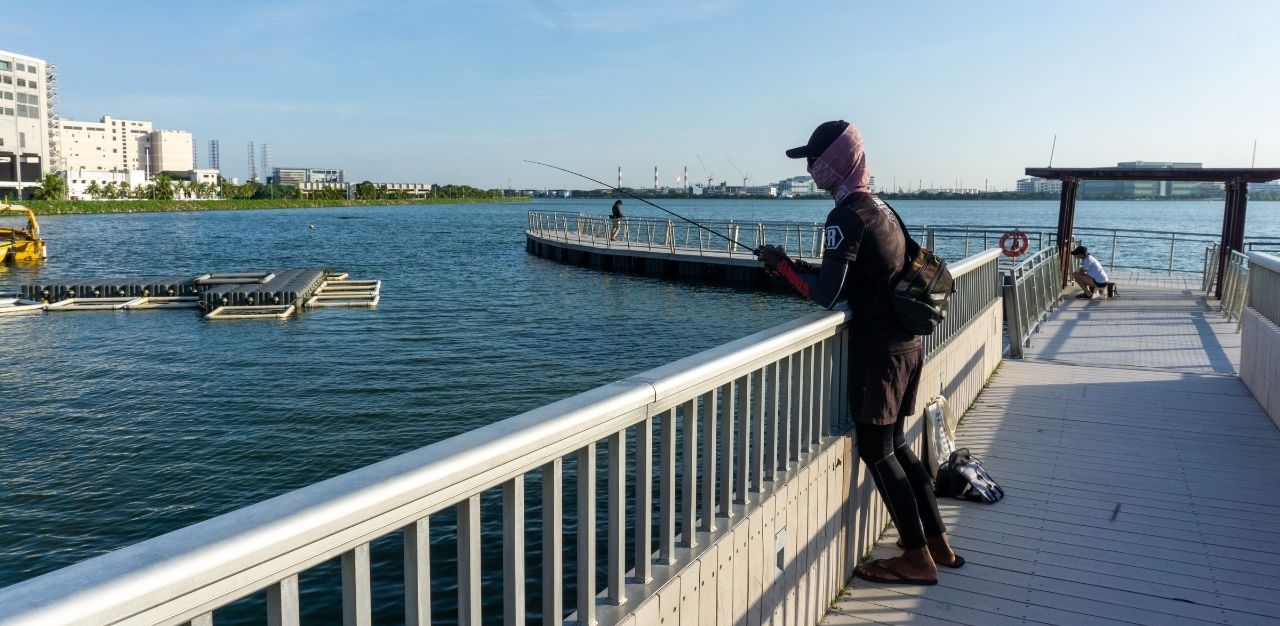Rod loosely in hand, Jubel Punnoose Mathew, 19, scans the waters beneath the jetty at Pandan Reservoir, in western Singapore, with observant eyes. Occasionally, he stands back to cast the rod, the brightly coloured micro crankbait attached towards the end of the line flashing as it catches the sunlight.
In the first 20 minutes of his session, he catches two peacock basses. After snapping a few quick photos, he releases them back into the water.
This is a weekly affair for Mr Jubel, who has been fishing for the past five years, after his interest in the sport was first piqued at the tender age of 14.
But, he says, fishing these days is more difficult than it used to be due to tightened regulations on where anglers can fish, coupled with an increase of recreational anglers in Singapore: “The legal grounds [available] are a bit absurd. The space they provide is too little for the amount of anglers there are.”
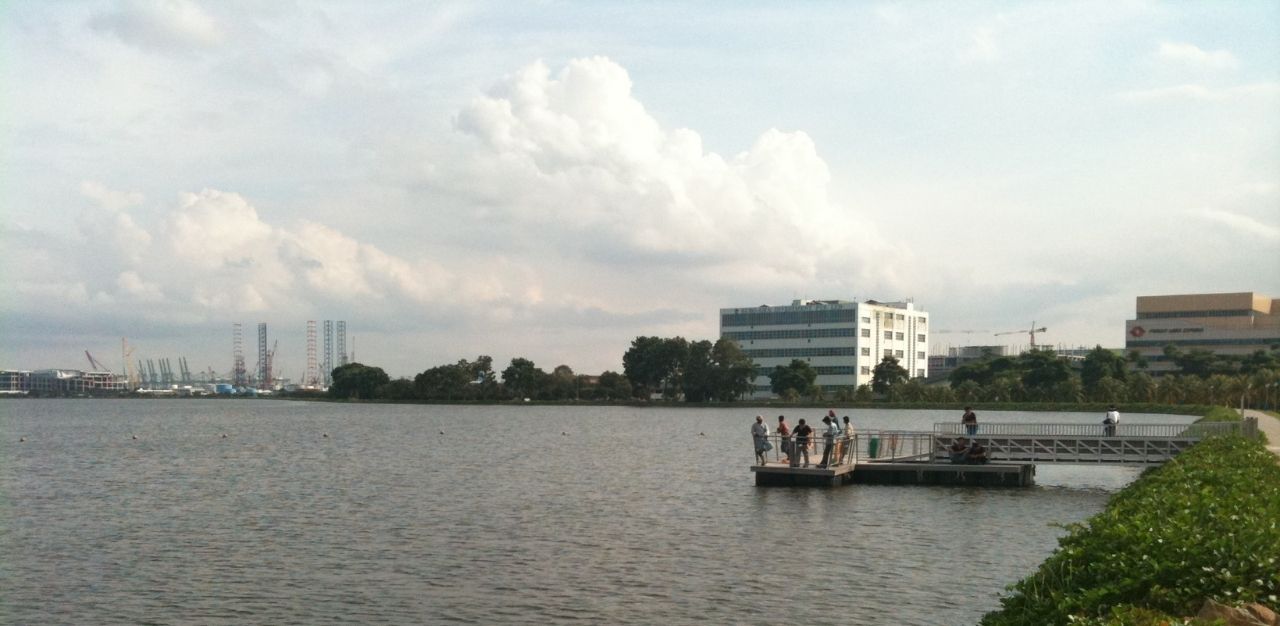
When TheHomeGround Asia joined Mr Jubel for a short fishing session on the West Coast side of Pandan Reservoir, he shares that the small jetty located across the reservoir along Penjuru Road was already filled with five anglers on a weekday afternoon.
Mr Jubel’s concerns are echoed by fellow angler Ng Jia An, 31, who has been a part of the local fishing community for nearly two decades, and served as a professional fishing guide in Papua New Guinea for eight years, before returning to Singapore because of the pandemic.
Mr Ng says, “The Government has put in slight efforts to open up legal fishing grounds, but taking into consideration that the general public will be using these places, the fishing grounds are generally very shallow, easy to access, and safe to use.”
But from an angler’s perspective, “When [a location] is easy to access and is shallow… There’s no fish.”
And while both Messrs Jubel and Ng acknowledge that such restrictions were implemented in view of public safety, to prevent potential accidents from happening when fishing in areas that are less secure, Mr Jubel says that such limitations could have implications on safety and the sport as well.
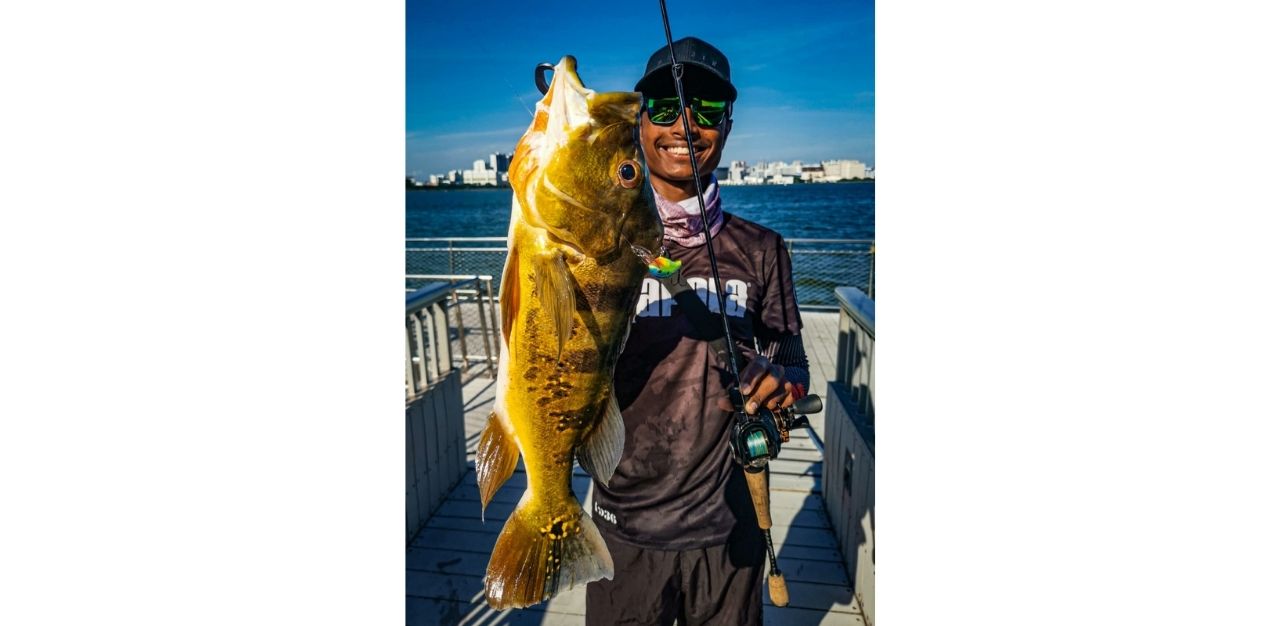
“Since we are using treble hooks and [other types of fishing equipment], when we cast, we might accidentally hook onto the person that’s behind,” he explains. Having limited spaces for anglers to fish might also cause a phenomenon known as ‘fishing pressure’, where fishes “just stop biting due to the amount of pressure that’s being put on that area.”
He elaborates, “If the grounds were bigger, there’s more space for us [anglers] to fish, and the pressure wouldn’t be as concentrated.”
But besides constraints on where anglers can fish inland, extensive regulations surrounding proper fishing etiquette and sustainable fishing within Singapore’s waterways are still lacking.
Current regulations surrounding fishing within Singapore
On current regulations, Malcolm Lim, 17, who has been fishing for seven years, says, “There is definitely room for improvement. Authorities can be more open and understanding of the hobby, and further review current legislation.”
At the moment, the only legislations applicable to inland fishing are designated sites, and the prohibition of live bait. These regulations are enforced by Singapore’s national water agency, PUB (Public Utilities Board), in order to ensure public safety and maintain the water quality in reservoirs, with those caught breaching the violations being subject to a fine of up to S$3,000 (US$2,202).
When it comes to the actual sport, PUB does lay out recommendations for responsible and considerate fishing practices. In July 2020, PUB had begun deploying special bins across the island to encourage proper disposal of used lines and hooks, in an attempt to prevent fishing gear from causing potential danger to passers by or becoming marine litter.
On-the-ground organisations like Marine Stewards have also developed a set of guidelines to encourage sustainable fishing practices in Singapore, such as promoting catch-and-release, releasing juvenile, threatened, and endangered species, and keeping invasive ones.
But, the National Parks Board highlights that mandating catch-and-release as a regulation would be challenging, due to various reasons like difficulties in enforcement and the survivability of fish who may be caught.
Still, anglers like Mr Ng welcome expanded regulations and believe that much more can be done by authorities to better manage the fishing landscape locally. He provides the example of Australia, a case study he lauds as having “the best policy in the world.”
“There, each angler that wants to go fishing within their states or province have to apply for a fishing permit, and the Government has set up a body overlooking it and ensuring that all these are in place,” he expounds.
“Anglers who go fishing have to bring their permit. They get checked on, and they have got to clean the place up after they use it. There’s regulation on the fish sizes that they can take back for food.”
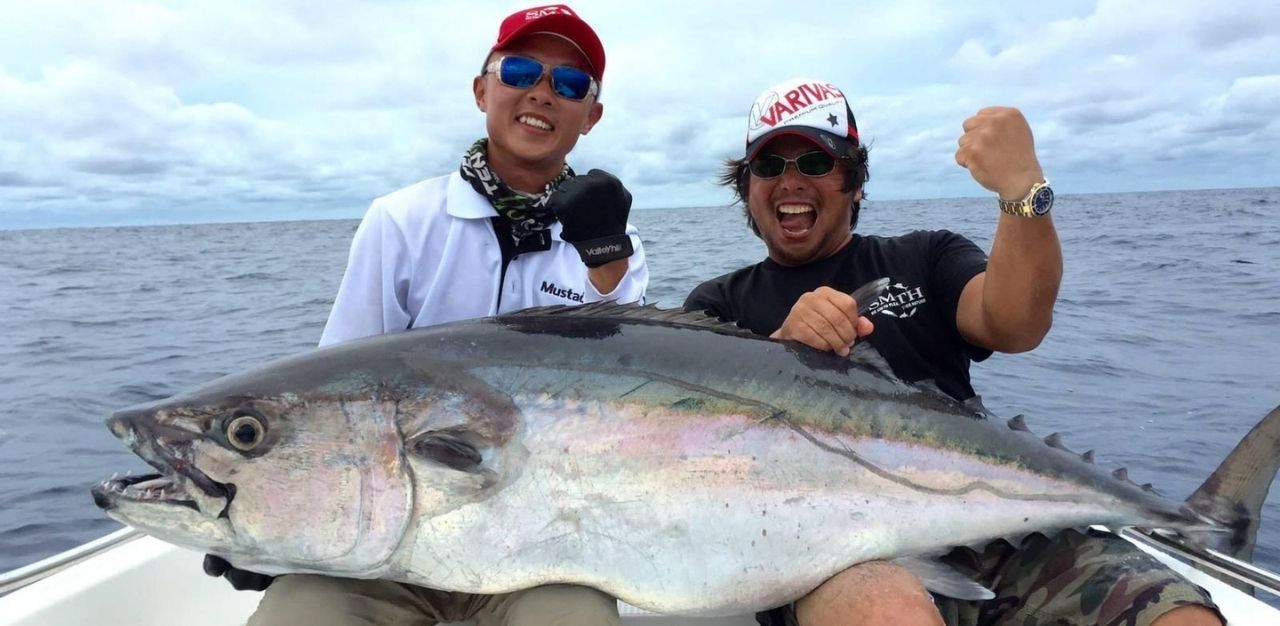
The Government then uses the permit fees collected to run and improve the fishing programmes. For instance, in the state of New South Wales, money raised is placed into Recreational Fishing Trusts and goes towards projects such as refurbishing jetties, research for conservation programmes, or introducing facilities to help anglers, such as fish cleaning tables.
But with the lack of local regulations in place at the moment, anglers TheHomeGround Asia spoke to underscore the need for the community to bear the responsibility itself.
Responsibility of anglers
“It is important for anglers to represent themselves positively, starting with practising good fishing etiquette,” Mr Lim says. “By having the general public view the fishing community positively, it will provide them with an incentive to support an improvement in the regulation of freshwater fishing.”
In a bid to push for better regulation of inland fishing in Singapore, Mr Lim surveyed 110 local anglers in early-July to understand their stance on various issues within the community. Results found that a whopping 88.5 per cent of respondents recognised a need for the community at-large to improve their fishing etiquette.
Salient points raised include a need to “maintain the cleanliness of fishing areas, and being observant of surroundings when casting.”
Anglers in the community also highlighted the need for public education on how to properly practise catch-and-release, and ensuring proper treatment of the catch to improve chances of survivability.
The long-term sustainability of Singapore’s fish population also stands to gain when basic fishing etiquette is practised, emphasises Mr Jubel, who says, “If everybody does their part, follows the rules, doesn’t bring back everything [they catch], catch-and-release, the fish population can be quite decent.”
Aside from maintaining a healthy fish population, Mr Lim allays worries that fishing might be detrimental to Singapore’s marine biodiversity: “Many members of the public believe that [freshwater] fishing has a negative impact on the environment in Singapore when in reality, there is not much of a difference, since we only target invasive species.”
He clarifies that freshwater anglers primarily fish peacock basses, toman, and arowana – all of which are invasive species in Singapore’s waterways.
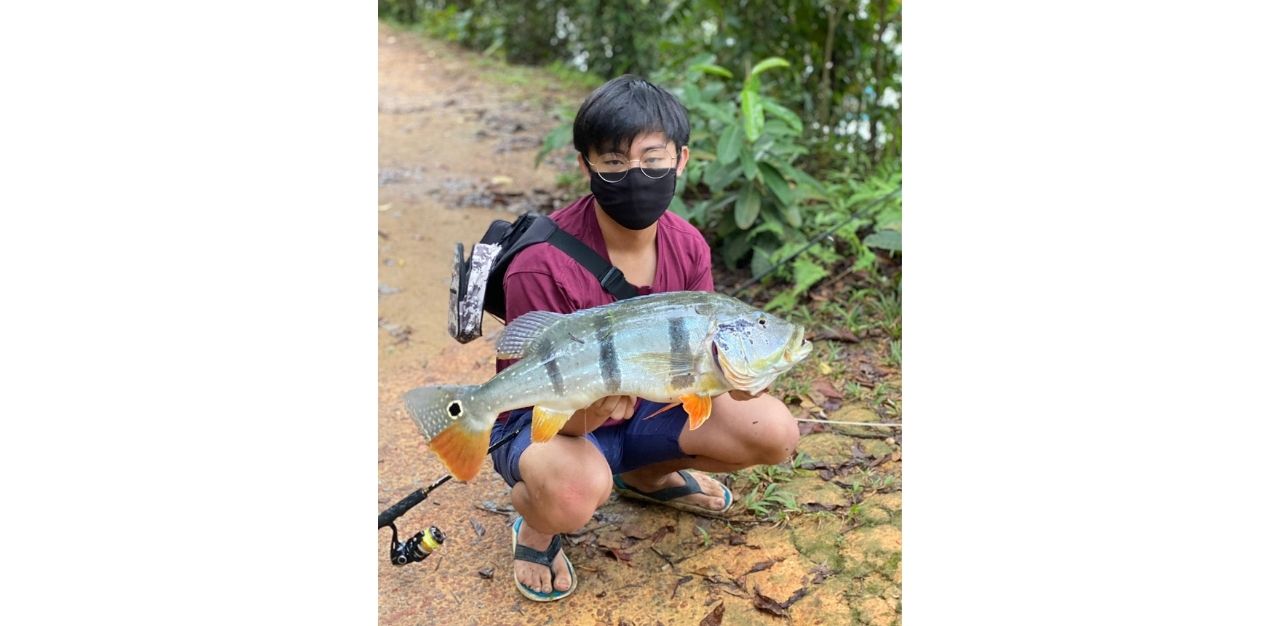
For their own part, Messrs Ng, Lim, and Jubel are practising what they preach, and mainly practising catch-and-release, unless there are extenuating circumstances. Mr Jubel explains that he rarely brings home what he catches, unless his parents have asked him to. While Mr Lim says that he only brings fish back if it was severely injured and unlikely to survive after being released.
“We are anglers,” states Mr Jubel. “We don’t fish for food, we fish for sport and to enjoy nature.”
Equipment, as well, is something Mr Lim is mindful of; after an unfortunate experience while using a gaff hook (a rope tied to a giant hook, used to hoist fish up jetties that are high above the water) that accidentally killed a mother fish guarding its fry, Mr Lim has been deterred from using gaff hooks altogether. Instead, he now makes it a point to use alternative methods, such as nets to land fish from high ground, which increases the survivability of his catch.
Presenting a united front
Aside from practising good etiquette, Messrs Lim and Jubel also highlight the need for all anglers to be considerate in public, so that the community is taken seriously. Says Mr Lim, “How the hobby is represented needs to be improved… Although it is much more common amongst youth, anglers often get into arguments with other members of the public when confronted for illegal fishing in boardwalks and city areas.”
Mr Jubel agrees, “A lot of the younger generation, when they go illegal fishing and security comes and tells them, some of them will fight back. That’s not nice for us as the public will look at us like some kind of threat going around causing mayhem.”
He adds, “It reflects badly on [the anglers] that actually do put in the effort to make fishing look good in Singapore, and do proper things like being mindful and respectful to the public.”
If the fishing community in Singapore is keen for change to occur, Mr Ng argues that the community will need to come together as a united body: “At this stage, everyone wants to have a say and be heard in the fishing community…they don’t really see things eye to eye, all they want is the best for themselves, so it can be quite tricky.”
He continues, “When you stand united, and we have 50,000 anglers that are active and willing to voice out, the Government will have no choice but to actually start paying attention and providing a proper response.”
“It’s an uphill battle,” he rues. “But there are a lot of people who are passionate about fishing. There are a lot of people that are trying.”
Join the conversations on TheHomeGround Asia’s Facebook and Instagram, and get the latest updates via Telegram.
